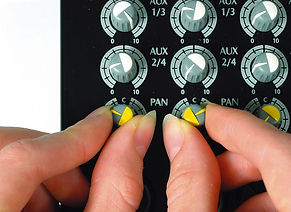
Sound Production Theory
Sound Production theory is the teaching of techniques, and proper usage of, equipment and mixing desks in a studio. As I began to decrypt what looked like the scariest part of the entire course, the Mixing Desk, and learning exactly what everything did, I felt rather daunted.
It was a massive relief and eureka moment for me when I learned that the desk had channel strips, and that, once you learned one, you knew them all. From there I went from daunted to familiar quite quickly with using the mixing desk.
I learned how to set up a session on the software that the desks in the college run on, Protools, and how it interacts with the desk. I learned about Equalization or EQ, and what it is used for, the effectiveness of applying it and recognising if it’s needed. I was shown and am now familiar with how to safely set up and de-rig a session in the live room, and on the desk.
A word of wisdom my lecturer taught me is that you should always get the session set up and ready, well in advance of the artists coming into the studio, as I was told it would save a lot of time for you and the artist, which allows you to get more work done in the time you have available. I found that this It made a lot of sense and to be rather logical but one of those things that could get overlooked, to which I am happy to have been taught.
Another good bit of information I was told early on, was that all the gear you use in a session with an artist should be recorded and noted, so as, when that particular artist comes back at a later date, and wants to redo parts of the song, these notes ensure that you can have everything exactly the same as it was before so as no difference in the sound is caused by differences in the setup and/or equipment.
During sound production theory I was taught about XLR cables, what they are and what they do. They are a three pinned balanced cables designed to apply phantom power to condenser microphones, and to input and output signal through them.
I also learned about Panning and how great of an impact it has on music. Growing up, I didn’t know much about the production of music but always suspected that certain sounds were played through a particular side of the headphones as it was always so glaringly clear to me, whenever one side of a headphone broke, that a lot of detail in a song was missing. So panning, for me, was a very easy concept to grasp and understand, as it was the technical explanation to something I had already logically deduced was happening in some pieces of music at times. I now actively learn and seek out new ways to manipulate panning to fully widen and broaden music.
I was taught about different types of microphones, although this area was covered in more detailed at a later date, but at this stage I understood the differences between a Condenser and a Dynamic microphone. At the same time we covered phantom power, and when it should be used, as well as the health and safety risks to take into consideration when rigging and de-rigging a session, with regards to phantom power, to make us aware on how to ensure we never damaged or destroyed equipment when unplugging cables.







